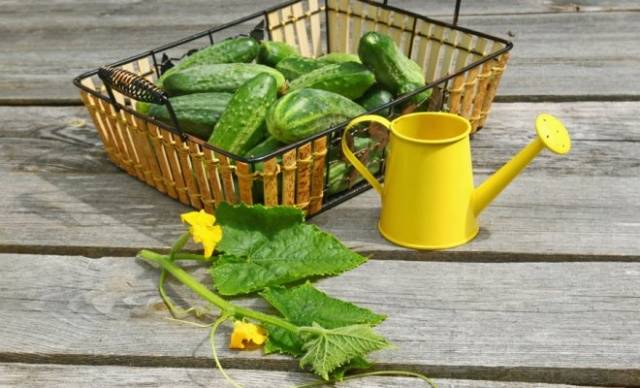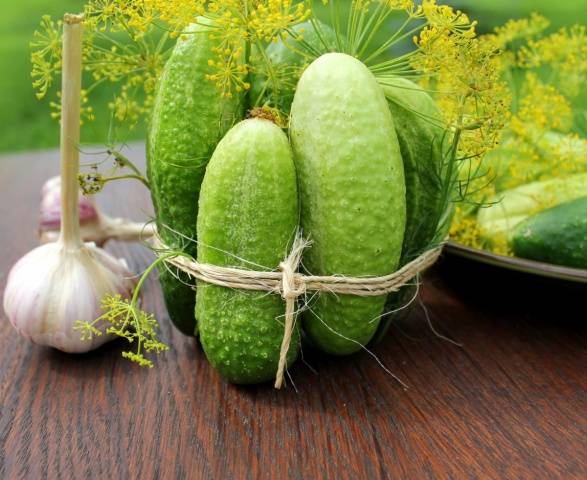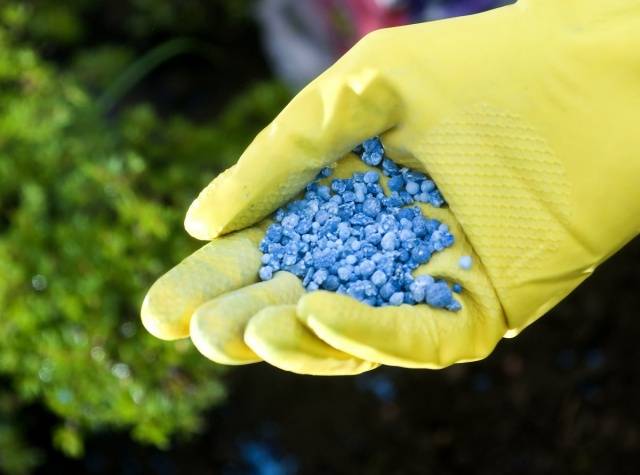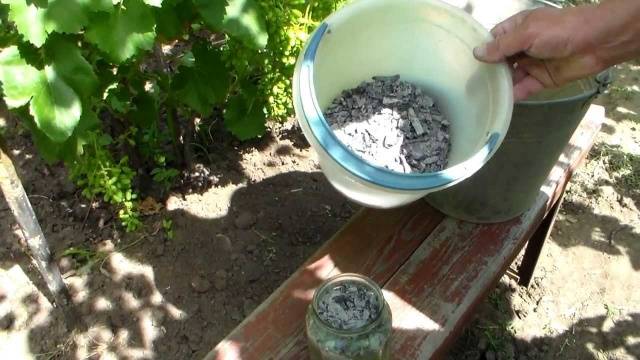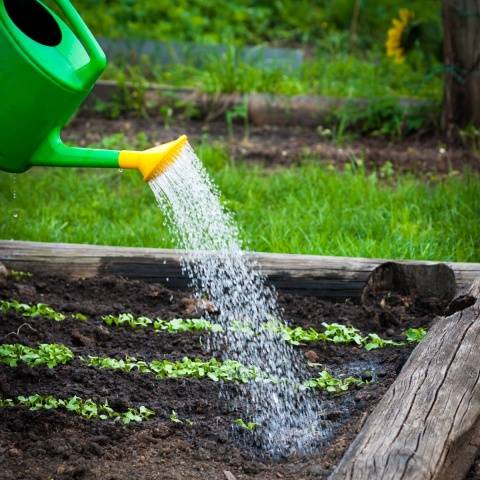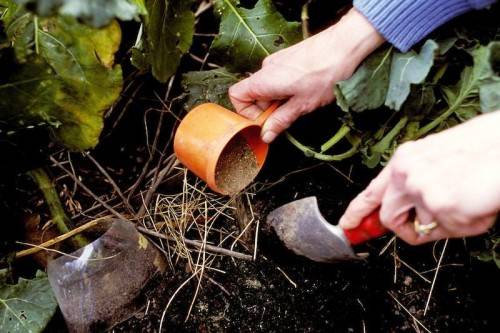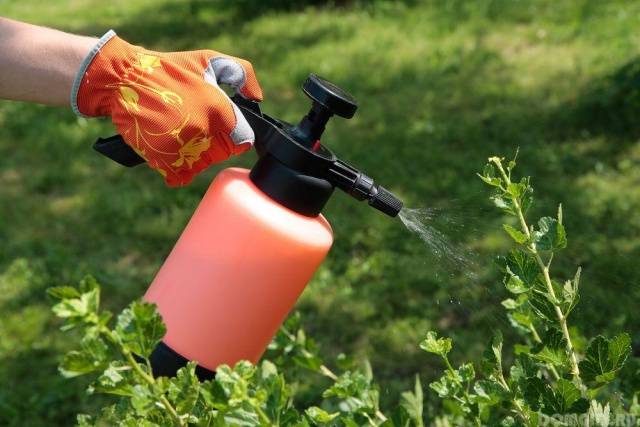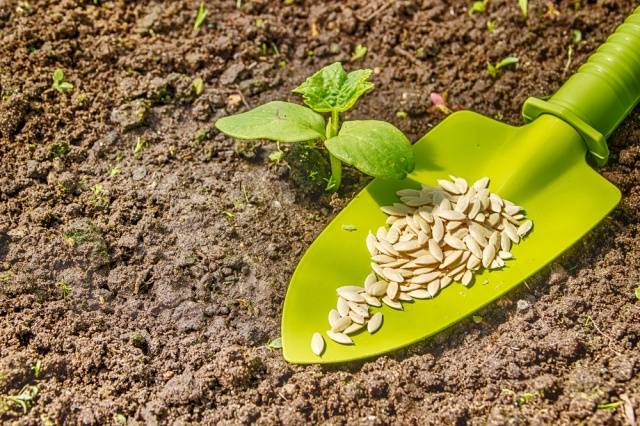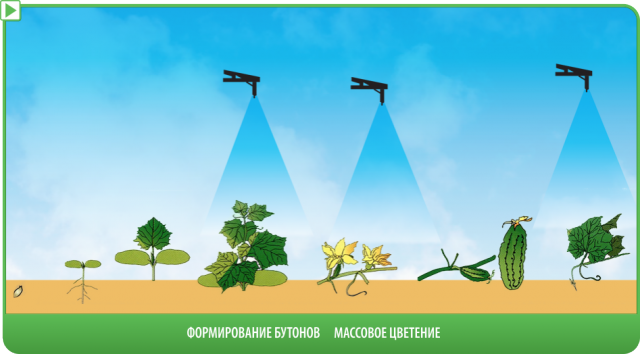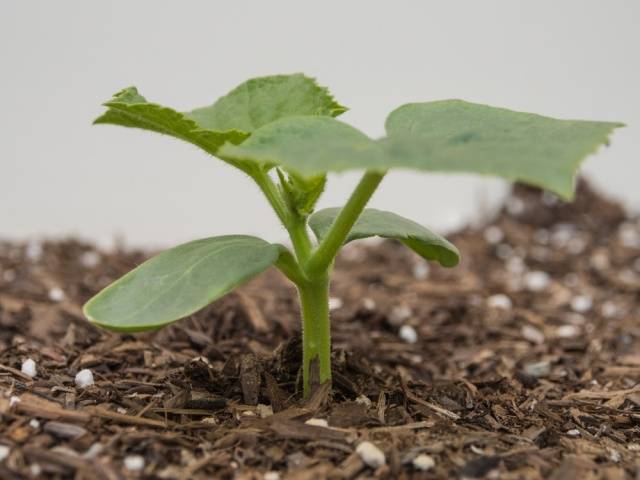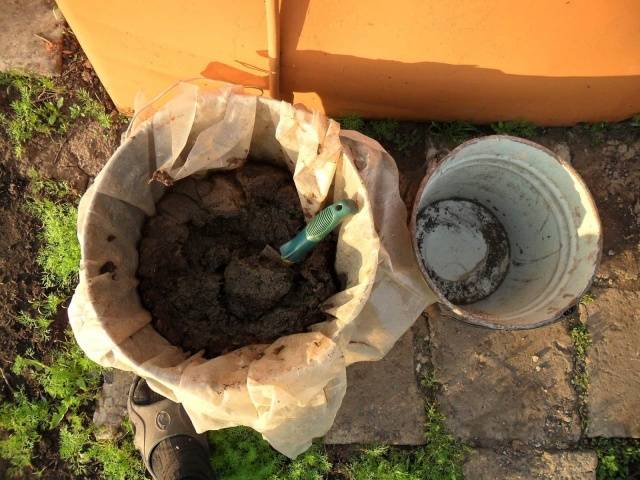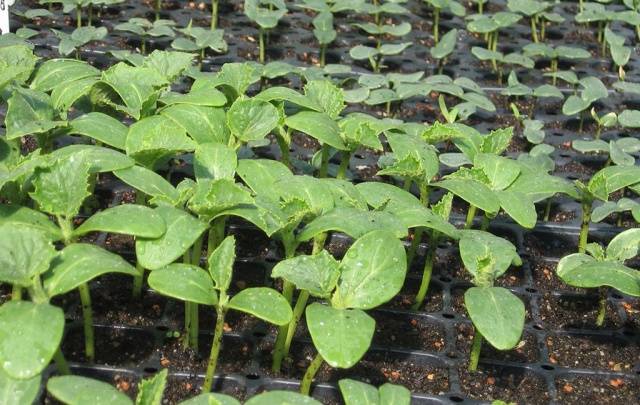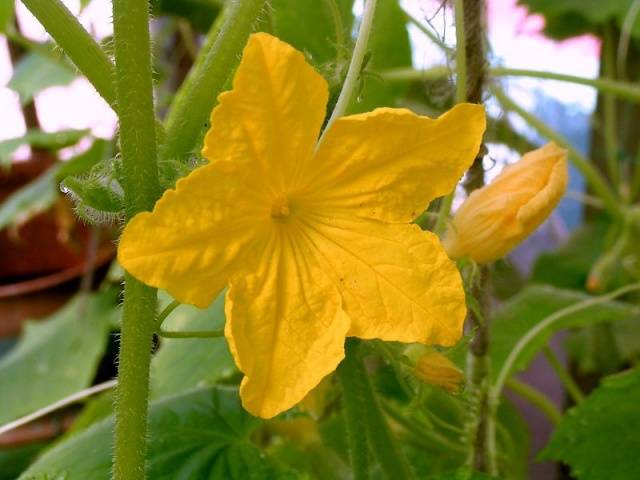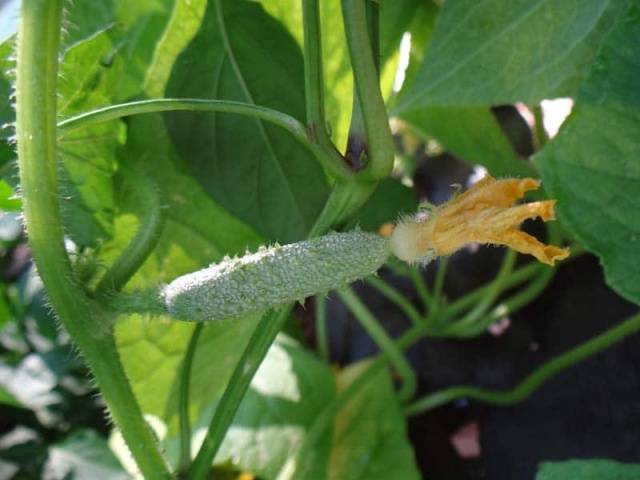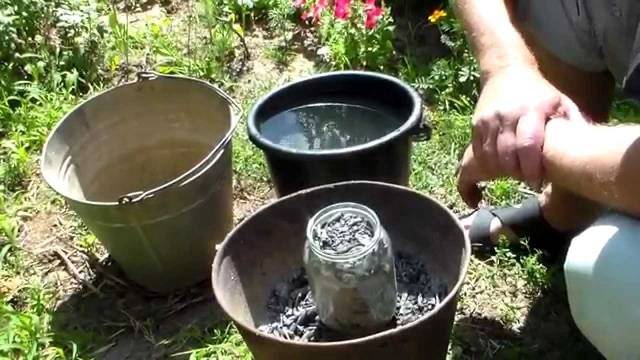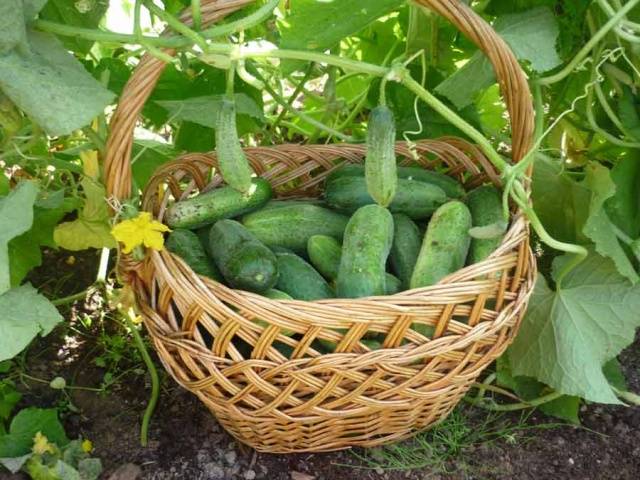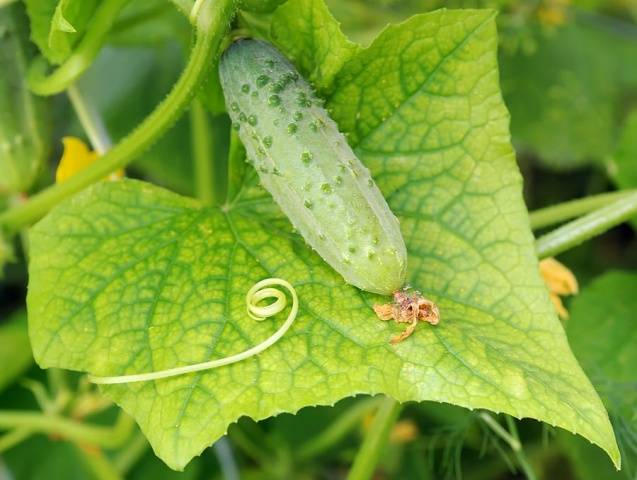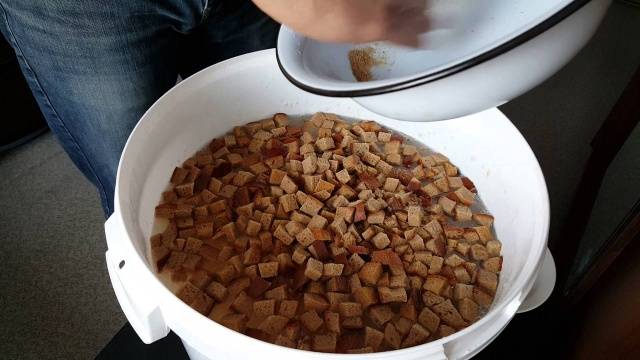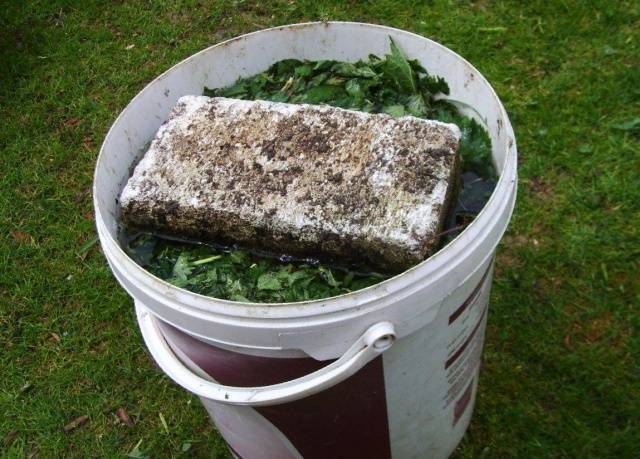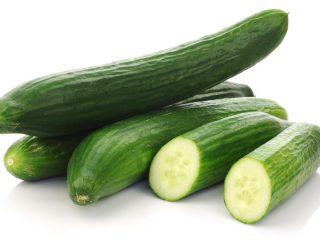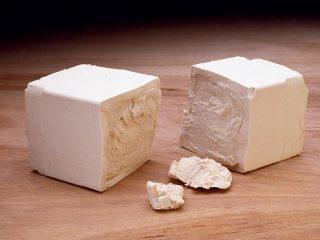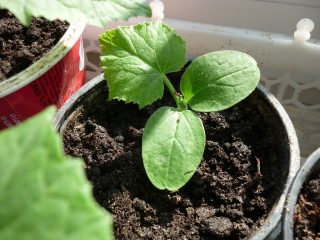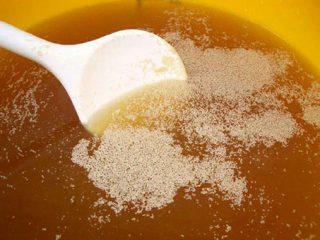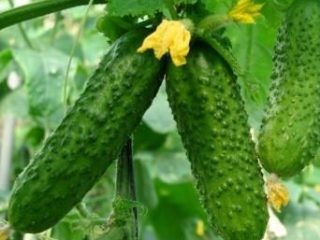Content
Cucumbers are the most common vegetable crop in gardens and summer cottages in Russia. The cucumber is unpretentious, easy to grow, and produces good yields of tasty fruits that can be eaten fresh or preserved for the winter. But even such a simple vegetable needs regular fertilizing, because fertilizers help improve the composition of the soil, saturate plants with deficient mineral components, increase productivity and prolong the growing season.
How to make a diagram fertilizing, what fertilizers are needed for cucumbers at all stages of crop development, as well as folk feeding for cucumbers - the answers to all these questions can be found in this article.
What types of fertilizers are there for cucumbers?
Before feeding vegetables, you need to understand the fertilizers themselves and understand why certain components are needed.
So, Fertilizers for cucumbers are divided into two large groups:
- Mineral fertilizers.
- Organic fertilizers.
Mineral fertilizers are chemical components from the periodic table, such as nitrogen, potassium, phosphorus, calcium and others. Such elements are contained in any soil, but their quantity may be insufficient, and soils of different composition contain different microelements.
For example, clay soils are deficient in iron and manganese, while sandy soils are usually deficient in the potassium and nitrogen components of the fertilizer. Exactly mineral fertilizers existing ones can be replenished flaws, simply watering the soil with a solution with the necessary additives.
Available for sale as complex, and simple mineral fertilizers for cucumbers. A simple supplement consists of just one component, it can be only potassium or only zinc. But a complex fertilizer must contain at least two components; the use of such compositions helps to immediately saturate the soil with all the necessary substances.
Mineral components are called inorganic, because their origin is artificial - synthesis from chemical elements. But plants, including cucumbers, are able to independently process such substances and convert them into organic ones, and then assimilate them.
Organic refers to fertilizers consisting of natural ingredients. They consist, in fact, of the same chemical elements as mineral fertilizers. The difference is that such fertilizers are natural - they are either waste products of animals, or compounds obtained during the process of rotting, fermentation or decomposition of organic materials (greens, food waste, sawdust and much more).
Organic fertilizers include:
- compost;
- cow or horse manure;
- poultry droppings (chickens or quails);
- humus;
- woody ash;
- various folk remedies;
- herbal infusions.
But there are cases when vegetables need additives that cannot be found in organic matter, or the gardener does not have access to such compounds (fresh manure or bird droppings are not found in every country farm). Then it is advisable to use mineral fertilizers for cucumbers.
Most often, gardeners use a mixed fertilizing system - the use of both mineral and organic fertilizers for cucumbers, as well as their proper alternation.
How to fertilize cucumbers
There are also different ways to apply fertilizers to vegetable crops. There are two ways to fertilize cucumbers:
- root;
- foliar.
Root feeding of cucumbers considered a standard procedure, it consists of introducing the required nutritional component directly under the root of the bush, that is, into the soil.
Thus, the root system of cucumbers is quickly saturated with deficient microelements - all useful substances are simply absorbed by the roots of the plants.
Root fertilizing for cucumbers should be done in the evening, when the sun has set and the heat has subsided; a cool, cloudy day is also suitable for this procedure. Before applying fertilizer to the cucumbers, the bushes should be watered abundantly - the soil should never be dry, this will lead to burns of the root system of the cucumbers with too concentrated fertilizers.
Foliar feeding of cucumbers is necessary under the following conditions:
- low night temperatures;
- cool and rainy summers;
- deficiency of sunlight (for example, when growing cucumbers in greenhouses or in shaded areas);
- some cucumber diseases that damage the root system;
- poor development of cucumber roots.
Each of these factors leads to the fact that the roots of cucumbers do not develop properly and become superficial and weak. As a result, plants cannot absorb fertilizers applied in the standard way - at the root.
In such cases, foliar feeding is needed, the use of which allows you to saturate even cucumber bushes with a weak root system with fertilizers. The essence of the method is to irrigate the stems, leaves and flowers of cucumber with special solutions with the necessary mineral components.
It is convenient to spray cucumbers using a regular garden sprayer, and this should be done in the evening or on a cloudy day, so that the sun in combination with fertilizers does not cause burns to the green mass of the plants.
Scheme for fertilizing cucumbers
Of course, any fertilizers must be applied in a timely manner, because at different stages of development, cucumbers, like any garden crop, need completely different microelements and nutrients. If you do not take into account the needs of the crop, all efforts and costs for fertilizers will be in vain - improper fertilizing can harm cucumbers even more than a lack of organic elements.
Each gardener develops his own feeding scheme, because it largely depends on the composition of the soil on the site - fertile soil can saturate cucumbers with all the necessary microelements; such plants will only have to be fed once or twice a season (and then only to prolong the fruiting of cucumbers ).
But most Russian plots cannot boast of fertile soils, and besides, the land is gradually depleted - almost all summer residents and gardeners in the country have to restore the composition of the soil.
For example, before planting, fertilizers for cucumbers are not needed - the first feeding is carried out at the stage of formation of a pair of true leaves. Good soils will not need this fertilizer either - in areas with black soil, cucumber fertilizer can be used only at the stage of flowering and the appearance of ovaries.
The classic feeding scheme consists of four stages, but it must be adjusted taking into account the characteristics of the soil and the method of growing cucumbers (in a greenhouse or in open ground).
First feeding of cucumbers
Cucumbers should be fed no earlier than the first true leaf appears on them (not to be confused with the cotyledon pair of leaves). At this stage, not all plants need fertilizer, but only those that look weakened and grow slowly.
The most important component in this phase of cucumber development is nitrogen. Therefore, plants need to be fed with fertilizers with a high nitrogen content. These can be mineral fertilizers, such as ammophosphate or azofoski, or organic feeds such as chicken droppings, herbal infusion, liquid mullein.
A gardener can fill the gap nitrogen in cucumbers in one of the following ways:
- Feed cucumbers with solution urea and superphosphate.To do this, dissolve a tablespoon of urea and 60 grams of superphosphate in a bucket of water (10 liters). Fertilizer is applied at the root of the cucumber, along with watering.
- In combination with loosening the soil around young cucumbers, use root feeding with ammophoska (5 grams) or diammophoska (15 grams). This amount of fertilizer will be needed for each square meter of land. Mineral components are scattered between the beds with cucumbers and incorporated a little into the soil.
- You can also water the cucumbers with a freshly prepared solution of bird droppings. To do this, one part of chicken or quail droppings is dissolved in 15 parts of water. Water the cucumbers with the prepared solution.
- Prepare slurry in a ratio of 1:8 - part of the cow manure is dissolved in eight parts of water and the plants are watered.
- Prepare a herbal infusion for cucumbers in a ratio of 1:5, after first soaking the herb in water and pressing it with a press.
For those who are engaged in growing cucumber seedlings, the method of complex fertilization of young seedlings with a mixture of manure is perfect, ammonium nitrate and superphosphate.
Second feeding of cucumbers
The second stage of fertilizing young plants is carried out when the first flowers appear on cucumber bushes. This fertilizing is designed to make flowering more abundant, increase the number of ovaries, and prevent flowers from falling off.
You can also perform the second feeding of cucumbers in several ways:
- Water the cucumber bushes with a solution of complex fertilizer.To do this, prepare the composition: dissolve 40 grams of superphosphate, 30 grams of ammonium nitrate and 20 grams of potassium nitrate in 10 liters of water.
- Use a more accessible component - stir a glass of wood ash in a bucket of water, pour the solution over the cucumbers.
- Mix dry wood ash with superphosphate and sprinkle this mixture on the ground between the cucumber bushes, and work the fertilizer into the soil a little.
- Spray the cucumbers with superphosphate solution (2 tablespoons per 10 liters of water).
- A solution of boric acid (1 teaspoon) and potassium permanganate (10 crystals) applied to the leaves and stems will help to activate the flowering of cucumbers.
- You can attract insects to pollinate cucumbers with a solution of boron and sugar: dissolve 100 grams of granulated sugar and half a teaspoon of boric acid in a liter of hot water. When the mixture has cooled, sprinkle the flowers with it.
Third feeding of cucumbers
Next time, you need to fertilize cucumbers at the stage of abundant fruiting - when the plants begin to produce greens in large quantities. It is at this stage that cucumbers consume the largest amount of nutrients from the soil - their content must be restored with fertilizers.
All cucumbers need now is potassium, nitrogen and phosphorus. It is necessary to replenish the fertilizer deficit in several stages, and this can be done in the following ways:
- Water the bushes with a solution of nitrophoska - dissolve a tablespoon of complex fertilizer in a bucket of water. This fertilizing is done when the first greens appear on the cucumber bushes.
- A week after this, the cucumbers are watered with the following mixture: a teaspoon of potassium sulfate and 0.5 liters of fresh water are diluted in a bucket of water. mullein.
During the active fruiting stage, it is recommended to use only organic fertilizers to avoid saturating the cucumber fruits with nitrates and other harmful additives. Therefore, it is better to use mullein, chicken droppings, and humus, replacing mineral fertilizer complexes with them.
At this stage of development, cucumbers already have a strong root system; you don’t have to worry about damaging the roots or burning the plants with organic matter, but you still need to prepare fertilizers correctly.
Fourth feeding of cucumbers
The last feeding of the bushes is necessary in order to prolong fruiting, thereby increasing the yield of vegetables. Fertilizers for cucumbers at this stage should stimulate the formation of new ovaries and saturate the soil with those components that are needed for the ripening of large and even fruits.
So, There are several ways to make up for the fertilizer deficiency in cucumbers:
- Water the bushes with a solution of baking soda - take four teaspoons of soda per bucket of plain water.
- Dissolve a glass of wood ash in 10 liters of water and pour the mixture over the cucumbers.
- You can foliar fertilize cucumbers with an infusion of rotted hay. Equal parts of hay and warm water are mixed and left for a couple of days. The resulting mixture is sprayed onto the leaves and stems of cucumbers.
To achieve greater effect, you need to alternate root and foliar feeding of cucumbers, use both organic compounds and purchased mineral fertilizers.
It is not at all necessary to use all four feedings - it is necessary to monitor the condition of the cucumbers at each stage of development.
Fertilizing greenhouse and garden cucumbers is practically no different from each other; again, the main factor in choosing a fertilizer component is the condition of the plants.
Folk remedies for fertilizing cucumbers
Those who are afraid of complex fertilizers, but do not have access to fresh organic matter, can be advised to use folk remedies for feeding cucumbers.
There are many such methods, but the following are considered the most popular:
- Bread sourdough. It can be prepared from fresh black bread crackers or bread crusts. To do this, an ordinary bucket or other container is filled two-thirds with breadcrumbs, the whole thing is filled with water and covered with a plate or lid, the diameter of which is slightly smaller than the size of the container itself (this is necessary to remove air). Place a weight on top of the lid to create pressure. Place the container with bread in a warm place and leave it there for a week. When the fertilizer is prepared, it is diluted with cold water and used to water the cucumbers. You can fertilize with bread every 10 days - this can replace all other fertilizers.
- Yeast fertilizer for cucumbers. A 100-gram pack of regular baker's yeast is dissolved in a ten-liter bucket of warm water. Leave the composition to ferment for 2-3 days. Each cucumber bush will need about 0.5 liters of this fertilizer; apply it at the root. Yeast fertilizers cannot replace a full-fledged complex, but they are good as an intermediate nutrition for plants.
- Onion peel infusion. Onions will help when the foliage of plants turns yellow, which may indicate both a lack of fertilizer and infection of the cucumbers.Add a glass of onion peels to a bucket of water, place the container on the fire and bring to a boil. After this, the solution is left under the lid for several hours to allow the fertilizer to infuse. Simply water the bushes with the prepared mixture, after straining the infusion through a sieve.
- Wood ash. An excellent fertilizer option using only natural ingredients, because ash contains a lot of useful microelements, and it also loosens the soil, providing oxygen access to the roots. Fine ashes from burned deciduous trees should be dissolved in water in the proportion of a glass per 10 liters. Simply water the ground with this solution every 7-10 days - cucumbers may well need this feeding at all stages of development. Ash from burnt tops, hay, sawdust, and dry leaves can be used to fight insects and various infections - you just need to dust the soil in your cucumber beds with such ash.
- Green fertilizers. Such compositions are prepared based on an infusion of weeds; you can use ordinary grass left after weeding the beds or pick nettles and wormwood. The greens are poured with water and left in the sun under heavy pressure - after a couple of days the infusion is ready, it can be diluted with water and watered over the cucumbers. This feeding will additionally help prevent attacks by insect pests and protect cucumbers from diseases.
Let's sum it up
All methods of feeding cucumbers have the right to exist - each gardener will eventually determine the most suitable option for himself. Fertilizing cucumbers is necessary for normal growth, obtaining larger yields and prolonging the fruiting period. Whereas cucumbers from unfertilized beds are easily distinguished by small twisted fruits, a bitter taste and a weakly saturated color of the peel.
